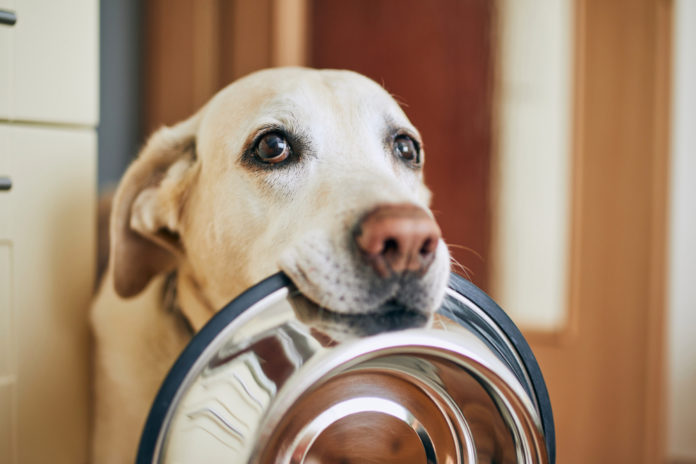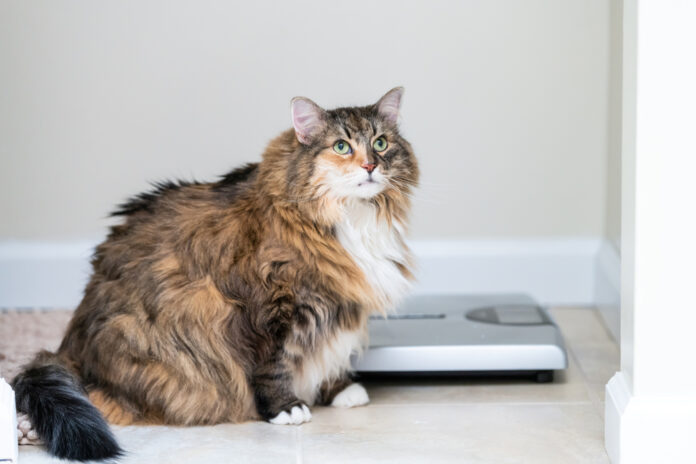Novel proteins for your dog or cat

From boar to yak, novel protein sources offer variety to your dog or cat’s diet, help with allergies, and widen your options in a time when food supply chains can get shaky.
Novel protein sources for dogs and cats aren’t really as novel as they used to be. Some years ago, feeding bison or rabbit to your animal companion would seem unusual – but nowadays, these meats and others are becoming more accessible and are also appearing on the menus of premium pet food companies. Novel or alternative proteins are a boon to dogs and cats with allergies to more common meats, such as beef and chicken. They’ve also gained in popularity since the massive pet food recalls of 2007, and currently, during the COVID-19 pandemic, when food supply chains have become more fragile (see below). Whatever your reason for trying novel proteins on your dog or cat, it’s a way to add more variety and flavor to his diet!
Novel proteins and their benefits
Novel proteins can include anything from the aforementioned bison and rabbit, to venison, duck, guinea fowl, ostrich, and goat. Here are a few more examples you may not have considered:
- Yak is a lean protein, similar to bison, and contains more iron than beef. It is a great alternative for animals with a sensitivity to beef. Yak is low in cholesterol and saturated fat, and is rich in Omega-3 fatty acids, making it a heart-healthy protein.
- Elk is a “nutrient-dense food”, which means that while it is low in calories, it is a valuable source of a vitamins and minerals, including vitamin B12, iron, niacin, phosphorus, riboflavin, thiamine, and zinc. The American Heart Association calls elk “The Heart Smart Red Meat”.
- Wild boar is described as a cross between beef and pork. This novel protein is lower in fat and higher in protein than beef. Wild boar is high in iron, niacin, selenium, thiamin, and zinc, along with vitamin B6.
- Kangaroo is a terrific source of high quality protein and a valuable source of vitamins and minerals, including vitamins B6 and B12, iron, niacin, riboflavin, and zinc. Kangaroo is a valuable source of heart-healthy long-chain Omega-3 fatty acids and, like buffalo and bison, contains the antioxidant CLA (conjugated linoleic acid), recognized for its cancer-preventative properties.
How COVID-19 has affected the pet food industry
As with so much else, the COVID-19 pandemic has had an impact on pet foods and the supply chain, whether we are purchasing kibble or home-preparing whole food diets.
In early July 2020, reports stated that the pet food market had been confronted with a host of challenges, from complete lockdowns, to the overhaul of manufacturing processes in locations around the world, to new approaches to packaging. Each challenge resulted in a growing demand for “natural” products for animals, and more transparency when it comes to ingredients and the sale of products.
I have received a number of calls, emails, and texts from people having difficulty finding food items to prepare or round out their dogs’ diets. With some initiative, however, the concerns turned into “aha” moments, as special orders became more popular, and alternative protein sources were explored. While preparing this article, in fact, I found that a local health food store was bringing in more novel proteins when “the norm” was not available.
A good way to introduce your dog or cat to novel proteins is to try a few of the accompanying recipes. They’re tasty, nutritious, and your four-legged friend is sure to enjoy them!
Recipes
Choose organic ingredients whenever possible.
Yak-a-Noodle-Doo
Ingredients
1 pound ground yak (you can also use ground bison, elk, kangaroo, or ostrich)
3 tablespoons first pressed olive oil
2 cups fresh kale, chopped
1 teaspoon sea salt
1 teaspoon turmeric
½ cup filtered water
Wheat-free noodles (e.g. Super Grains Fusilli, made with chia, quinoa, amaranth, and sorghum)
Instructions
Prepare noodles and set aside. Combine all other ingredients, except the first pressed olive oil. Place olive oil in a medium-sized pan and turn heat to high. When you see the first bubbles appear on the surface of the oil, add the yak mixture. Turn down the heat to simmer. Gently mix with a wooden spoon until all the pink is gone. Remove the pan from the stove, and allow to cool before serving over noodles.
Change it up: This novel protein recipe can also be served raw. You can also try a kale mash in place of the noodles, by whirling kale in a food processor or blender with a drizzle of first pressed olive oil.
Duck with quinoa – a medley of flavors
2 pounds duck (e.g. legs and thighs)
½ cup (6 to 8) dried Shiitake mushrooms or other dried mushrooms of your choice
3 strips Kombu kelp
1 knob of fresh ginger
2 Star of Anise
1 teaspoon sea salt
5 cups filtered water
1 cup quinoa
Instructions
Combine all ingredients in a big pot. As soon as you have a rolling boil, turn heat down to a medium simmer. Continue to simmer until the duck meat begins to fall off the bones – this will take 1½ to 2 hours. Remove meat from the bones. Discard the bones and return meat to the pot. You will now have a duck soup.
To prepare the quinoa, place it in a strainer and rinse well under filtered water. Put in a small pot and add 1¼ cups filtered water. Turn heat to high. As soon as bubbles appear, turn heat down to simmer, put a lid on the pot, and time for 12 minutes. Turn heat off. Using a fork, “fluff” the quinoa, then leave it for 5 minutes. Serve at room temperature with the duck soup mixture.
Change it up: This dish can also be served with Thai jasmine rice, which is perfect for gastrointestinal problems. It is easy to add this to the duck soup, once you have removed the meat from the bones. Simply add 1 cup of rice to the pot, and simmer for approximately 20 minutes, until the water has been absorbed. Cool and serve. This is a dish the whole family can enjoy.
Wild about boar
Ingredients
1 pound ground boar
3 tablespoons first pressed olive oil
1 whole egg
½ teaspoon sea salt
1 tablespoon fresh oregano leaves, chopped or torn or 1-1/2 teaspoons rubbed oregano
Instructions
Combine all ingredients except the olive oil in a medium-sized bowl. Using a teaspoon or tablespoon, depending on the size of your dog, form meatballs. Put first pressed olive oil in pan and turn heat to medium high. As soon as bubbles begin to appear, add boar meatballs. Turn meatballs a few times – they are done when there is no pink left.
Remove from pan and cool to room temperature before serving with fresh green beans or a seasonal vegetable mash (see below), and for extra pizzazz, add a dollop of water buffalo yogurt or another yogurt of your choice.
Seasonal mash
This recipe can be prepared as a raw or cooked meal topper or side dish for your novel protein recipes.
Ingredients for raw mash
4 to 6 cups brightly colored fruits and vegetables (e.g. kale, broccoli, carrots)
½ cup filtered water
Instructions
Simply whirl all the ingredients in a food processor. Drizzle with first pressed olive oil, or another oil of your choice before serving.
Ingredients for cooked mash
4 to 6 cups brightly colored fruits and vegetables
6 cherry tomatoes
2 tablespoons first pressed extra virgin olive oil
1 teaspoon sea salt
Instructions
Chop vegetables by hand or use a food processor. Transfer to a medium-sized pan. Add oil and salt. Turn stove on high until bubbles begin to form, then turn heat down to simmer, and gently cook for 15 minutes. Cool before serving. This mash is easy to store in the refrigerator or freezer.




